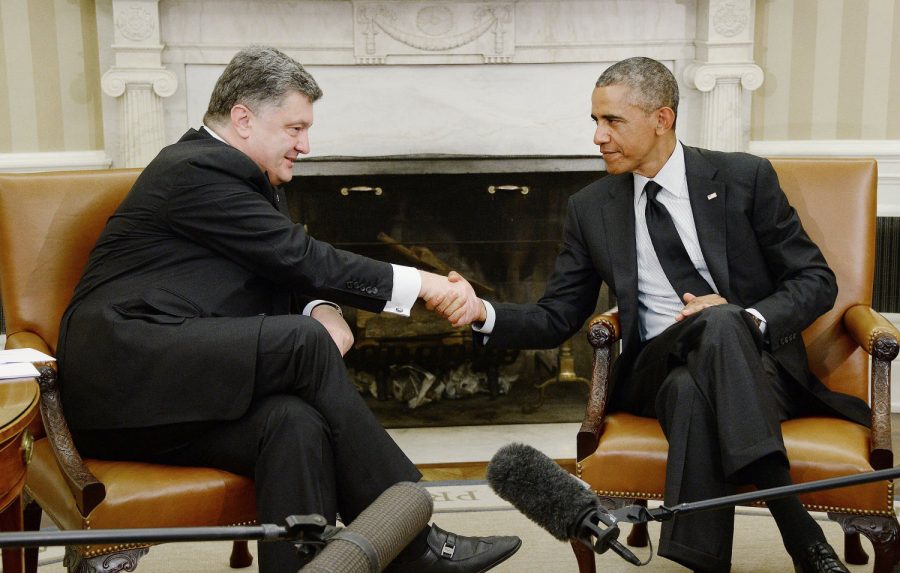Cease-fire in Ukraine may be disguised ploy benefiting Putin
President Barack Obama holds a bilateral meeting with President Petro Poroshenko of Ukraine in the Oval Office of the White House September 18, 2014 in Washington, DC.
The Ukrainian Revolution has been well documented since its eruption in February. This crisis gained attention by involving itself with one of the world’s strongest powers. Five months later, the revolution may have come to an end. The Russian ceasefire agreement was signed Aug. 29. The bloody battle may be brought to an end by the same hands that started it. Because of this, the longevity of the ceasefire does not appear hopeful.
Ukraine dissolved into two sides after many violent protests and the overthrow of their president, Viktor Yanukovych. One opposed Yanukovych’s decision to align with Russia instead of the European Union. The other supported Yanukovych’s decision. The anti-Russian southeast became enraged, making the riots more intense and frequent. These riots eventually led to the overthrow of the Ukrainian government.
The overthrow of President Yanukovych led to the establishment of an interim government, but Russia refused to acknowledge this government and showed their disapproval by declaring its creation a coup d’état. The Russian government used the vulnerability of Ukraine as an opportunity to invade the Crimean Peninsula, which they would later annex. This annexation ignited even more protest from the Southeast. The remaining Ukrainians who supported President Yanukovych were joined by Russian troops in response to these riots.
Five long months of revolution dragged on as casualties rose and resolution became a far-away dream. A plan was orchestrated by Russian President Vladimir Putin to end the war. This ceasefire proposed by Putin is projected to be a possible permanent solution. However, it can be assumed that any truce written by Russia will benefit their supporters; if a truce is to be established, the needs of the east must be taken into consideration.
Nowhere in the agreement does it state the removal of Russian forces; therefore, pressure will still be put on the anti-Russian east. This, along with the history of failed attempts to implement a ceasefire, prove that ending the revolution will be a complicated process that may not even work.
The ceasefire appears to be a clever ploy by the Russians designed to weaken Ukrainian rebels so that they can easily absorb the fragile nation into their republic. Pressure from Russian forces have already affected the nation. Eastern rebels agreed to its terms two weeks after the agreement was proposed. These forces will remain in Ukraine for the foreseeable future, posing an even greater threat to the safety of Ukrainian culture and society.







